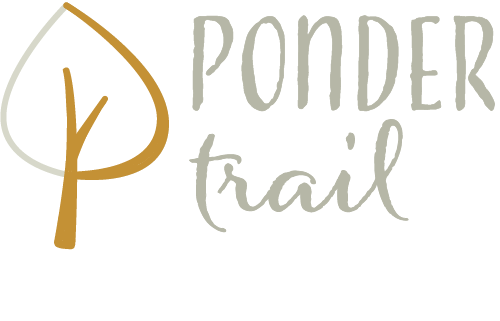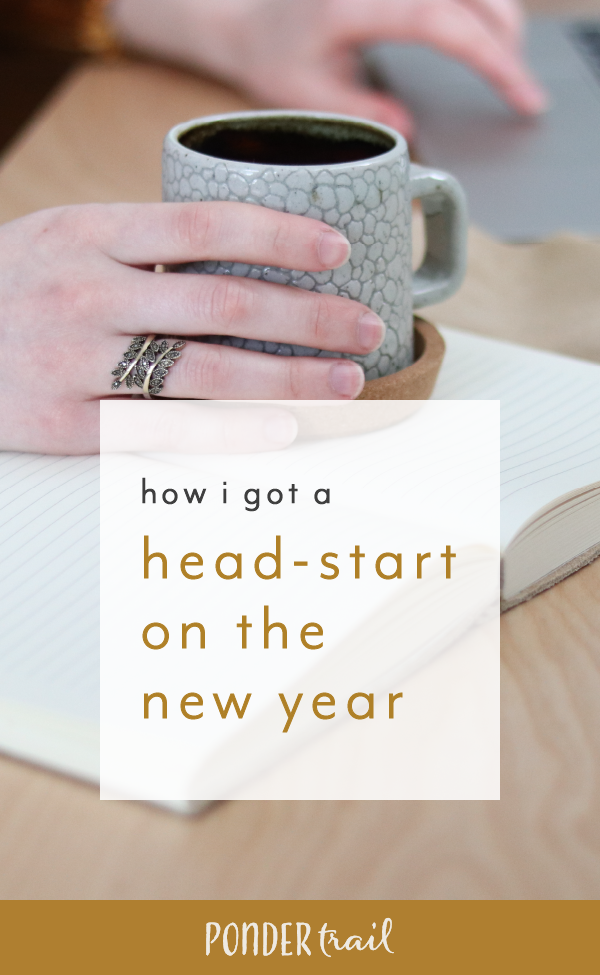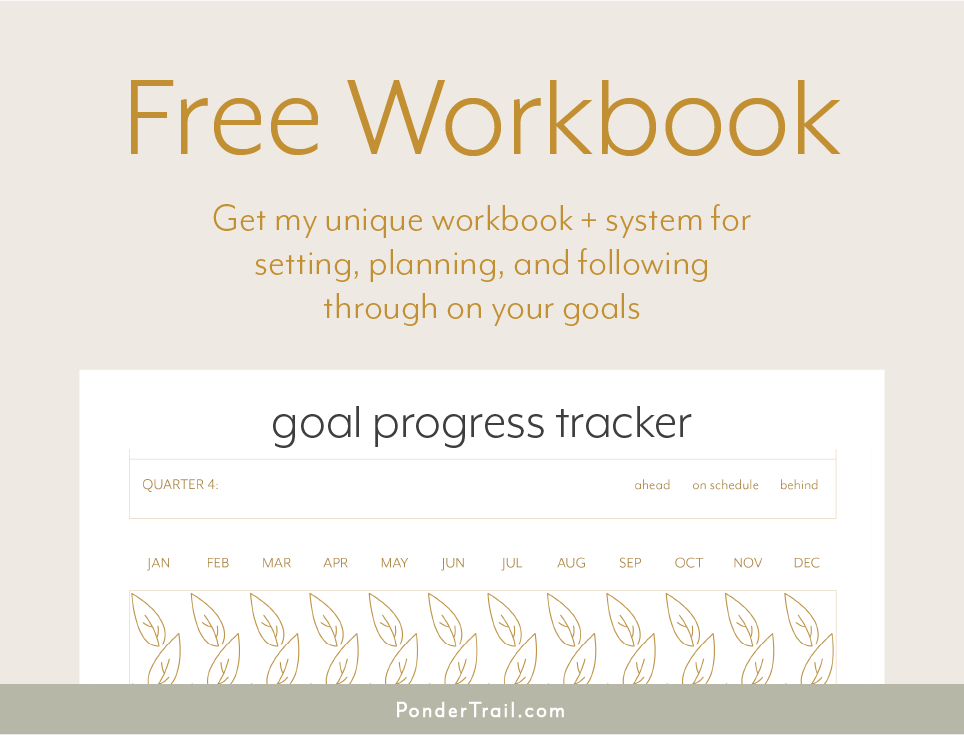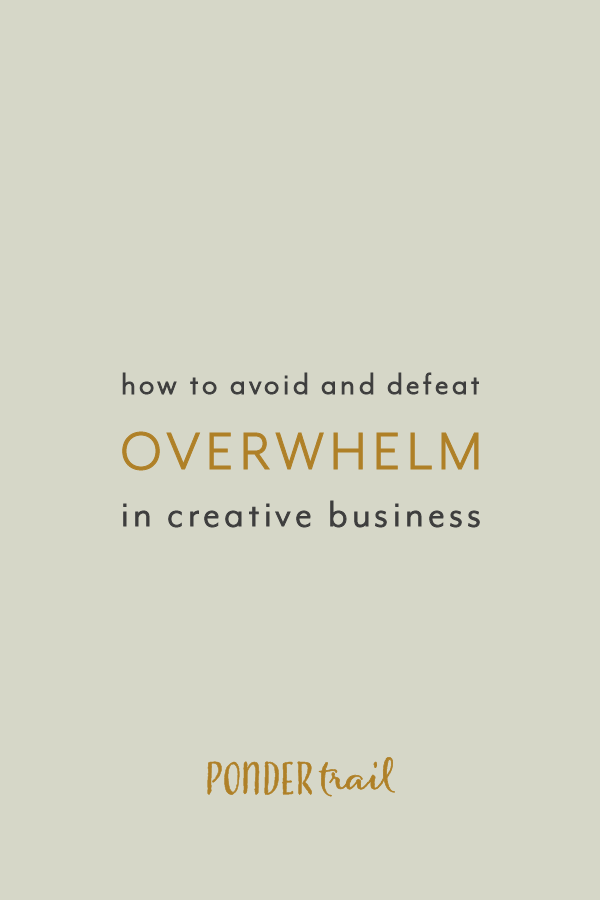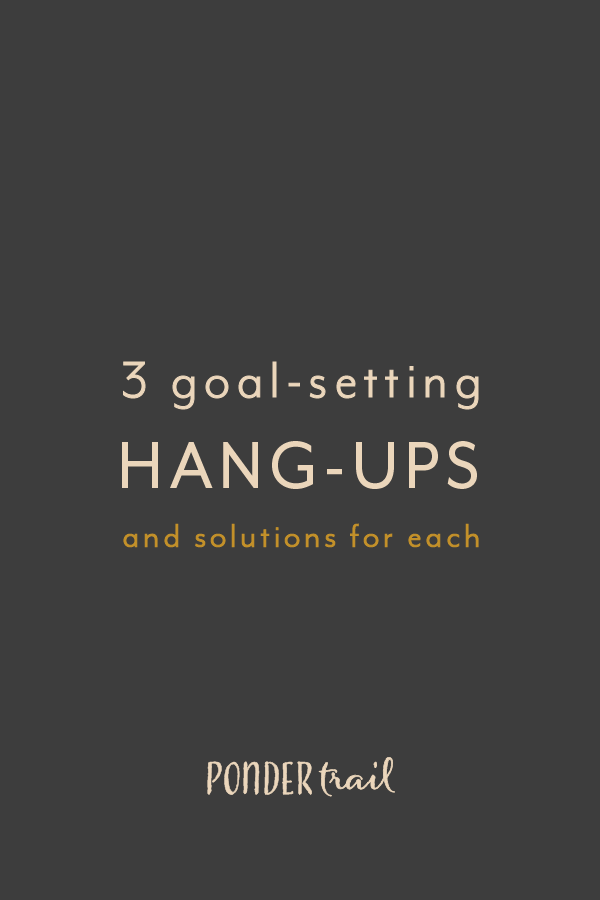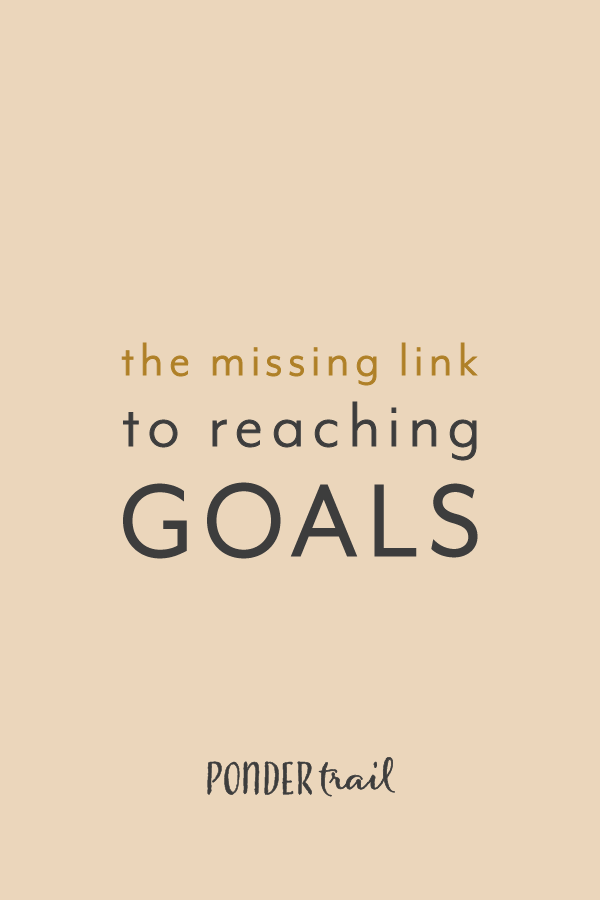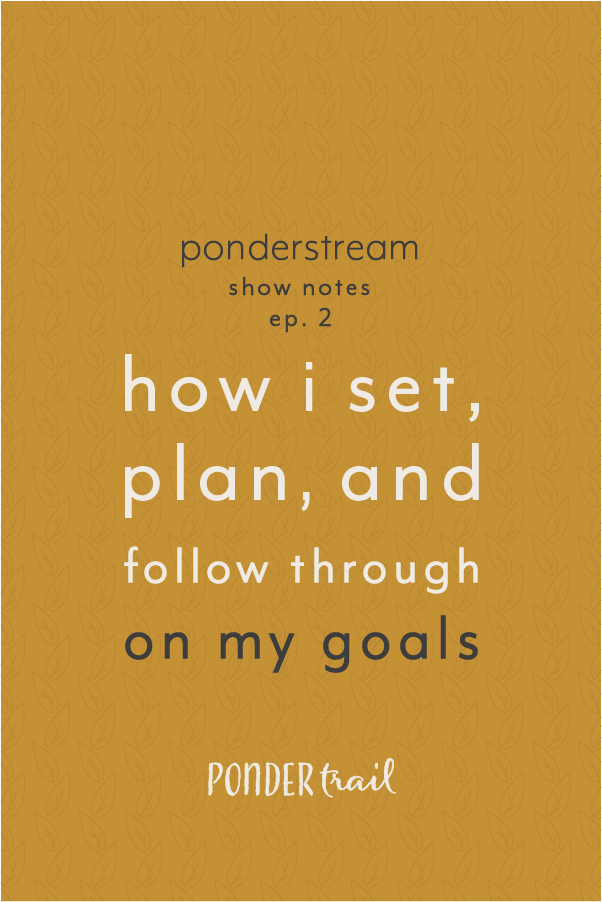How I Got a Head-Start on the New Year
I wanted to try something new going into January this year: get a head-start.
The first few weeks of January usually get away from me, and before I know it, I’m halfway through February.
So I brainstormed ways to set myself up for success this year, and I’m happy to announce it’s made a huge difference so far. They are strategies I plan to continue implementing for the rest of the year, and I recommend you try them out, too.
This is what I did:
1 // Had a Discovery Day to focus on my goals and specialization
I regularly dedicate a day to refresh my direction and focus for Ponder Trail. I call it a Discovery Day, and it’s a day that I spend on the inner workings of my business to determine what I need and want to work towards. (Because if you don’t aim, you’ll probably miss.)
It helps me stay on track, stay motivated, and keep my productivity up.
Instead of just looking at my “WHY,” I revisit the underlying reasons that led me to start my business. The goal is to create a little retreat for my mind so I can get deep down to the roots of Ponder Trail and work on refining and building my business up from there. So I remove myself from the online world and from all outside inspiration.
I choose a location that gets me in the mood (usually spread out on a cozy rug in a corner of our home, sometimes at a large desk workspace), and I take blank sheets of paper, my notebooks, and my calendar and planning sheets. I also take along my list of current goals so I can reassess, refresh, and refocus.
I had a Discovery Day earlier this month, and I’m already feeling more on-track and zoned-in for the coming year.
Related post: 4 Key Things to Do Each Quarter to Maximize Success
2 // Identified tendencies and habits holding me back
Learning more about our natural tendencies gives us the ability to change and improve. And note-taking and reflection are powerful ways to get the bird’s eye view needed to make progress moving forward.
Over the past year, I’ve been focusing on improving my productivity and my ability to make and execute a plan. And it’s something I want to get even better at this year.
So over the past several months, I took notes on my tendencies and on new ideas to put into play. I tried to be in-tune with noticing all of my unhelpful habits that got in the way of keeping up with a plan and reaching goals. I had to be extra intentional about realizing these inclinations because they are normally easy to overlook.
Each time I identified something unproductive, inefficient, or ineffective, I jotted it down. I also brainstormed ideas for ways to overcome them, and I kept track of epiphanies I had about things I could do to improve. Then, I sorted through my list to organize it and find patterns of my tendencies, hang-ups, and struggles.
It helped to set the scene for all of the following steps I took to make this year productive and effective.
3 // Created a new daily routine schedule
A schedule or daily routine that works well is invaluable. There’s just something about having a framework that guides you through the day.
It helps me account for every hour, which prevents me from wasting time without realizing it. It boosts productivity like nothing else. And it’is the only way I’m able to get things done.
When I don’t feel like working on something or when I’m dreading a particular task, I think about the nice neat lines and bounds of my schedule and how badly I want to stick to them. (I’m a chart fanatic, what can I say?) But also, I know that if I stick to my daily routine, I’m WAY more likely to reach my goals. So that’s a huge incentive for me.
Problem is, creating a schedule that actually works is a difficult task. This is mostly because there are so many elements that go into figuring out a daily routine that successfully fits with your life.
Landing on the perfect schedule is something I’ve been working on for years. It’s definitely an ongoing process. Recently, I decided that my current routine needed a little refining, and I was determined to enter into the new year with a solid schedule that fit like a glove.
I took a few days to map out a framework and test my routine, making changes as I went. And I’m happy to say I ended up with the most effective schedule I’ve probably ever had. I’ve been able to stick to it and it works really well with everything that makes up my day. It even has “structured flexibility” so I can move sections around on days that look a little different or when unexpected things come up. I’ll be sharing more about it soon in an upcoming blog post!
Get my workbook for setting, planning, and reaching your goals:
4 // Mapped out my editorial calendar for Quarter 1
My goal is to publish a new blog post (and audio recording) each weekday and to host a live webinar episode each week this year. To make that happen, I know I’m going to have to stay on my toes and streamline my processes as much as possible—especially with blogging.
Each time I sit down to write, I want to be able to focus on writing that post. I want all of the guesswork to be already taken care of so I don’t have to figure out which post to work on next. It removes that extra step, which makes blogging so much easier on a daily basis.
To set this year up for success, I mapped out all of my content for my first Quarter. I expect some things will change and get moved around, but for the most part, I’m hoping it keeps me on track for my 2019 goals and plan.
Tips for creating an editorial calendar:
Keep a running brainstorm list of ideas that fit your brand and your audience
Sort through and organize your ideas into different topics or categories
Choose your best ideas
Determine a chronological order
Plug them into your calendar, and assign due dates
5 // Figured out my marketing plan
As an introvert, putting myself out there is sometimes a struggle. Maybe you can relate? But despite the urge to lie low, it’s imperative to get your business in front of your ideal audience.
So I made it easy on myself: I created a detailed plan outlining when, what, and how I will be marketing my brand in 2019. This adds organization and distance and removes the discomfort of quickly throwing something together right before putting it out there for all to see. This helps me feel prepared and ahead of the game, which puts the shy side of me (and the perfectionist in me) at ease.
I first set some marketing goals so I would know what to aim for. Then, I broke them down into Monthly, Weekly, and Daily chunks.
The summary of my plan looks something like this:
Monthly:
Have a brand photo shoot to stock up on images for social media and blog post graphics.
Choose, edit, and organize photos for the next 30 Instagram posts; outline Instagram Story content; outline topics for tweets; outline images and content to pin on Pinterest.
Weekly:
On Fridays, spend 2 hours batch-tasking marketing: outline a week’s worth of Instagram captions according to that month’s content and goals; create Instagram Story content; write and gather tweets.
Daily:
Spend 1 hour on marketing each day (30 minutes publishing and working on content and 30 minutes connecting with people): publish Instagram post; post to instagram stories; pin 3-9 relevant images on Pinterest; publish 3 tweets on Twitter; post 2 times on Facebook.
I’ll be sharing more details on my marketing plan in an upcoming blog post. Stay tuned!
6 // Took stock photos for my brand
To stick to my marketing schedule and plan my social media posts out in advance, I wanted to enter the new year stocked up on every type of image I needed. Having photos at my disposal also lets me save time by designing my blog post graphics in batches.
So after calculating how many photos I needed for each month’s content and marketing, I dedicated a few hours to photography.
Photography is a huge part of branding, and it can make or break a business’s visual identity. It has the ability to convey quality and professionalism, so it’s essential to have excellent photos for your brand.
From the beginning, I’ve captured photos that I could use across different platforms to build brand recognition—photos that people would be able to associate with me and my business. Since I’ve already established Ponder Trail’s visual branding, it’s easy for me to take new photos whenever my stockpile runs low.
Tips for creating a photo stock for your brand:
always choose a sunny day with lots of natural, indirect light
pull in brand colors through accessories and items
style your scene with them
capture images that can be cropped in different ways to make them more versatile
snap some up close and some from a distance
take some horizontally and some vertically.
photograph some images leaving “negative space” if you want to overlay them with words
rearrange items and repeat (this way, you’ll have more variations to work with)
7 // Planned out my instagram content and strategy
After I figured out my marketing plan and had photos to work with, I was able to plan out a month’s worth of content for Instagram so I could stay ahead of the game and kick-off the start of 2019 on a prepared note.
Last year, in a blog post on 17 ways I improved my productivity, I mentioned how I layout and schedule 30 days of Instagram posts ahead of time. I wanted to continue doing that this year, but this time around, I’m taking it a step farther by adding more strategy into the planning process and by outlining content for Instagram Stories.
So after deciding on the layout of my images, I added a specific purpose or call-to-action to each post so they integrated with my content strategy for that month. I also planned out what I wanted to share in my Stories so I’d know if I need to design graphics or film videos.
Of course, there’s room to add extra things, too, but this gave me a solid guide. I always want to post valuable content for my audience, so I use that goal as a jumping off point when I want to brainstorm more, relevant ideas.
Just getting started? Grab my free Instagram worksheet:
Plan + create 1 month of Instagram content in just 5 days!
8 // Already practicing new year resolutions for my business
Why wait till January 1st to start building new habits? As soon as I figured out my game-plan for the coming year, I began to put it into practice. I didn’t do it perfectly, but I instead tried to get a feel for things and give myself a head-start.
It gave me time to revise and adjust things as needed, too.
Get my workbook for setting, planning, and reaching your goals:
What did your preparation for the new year look like? Do you try to set yourself up for success or do you jump in and figure it out as you go? I’d love to hear your thoughts. Leave a comment below!
